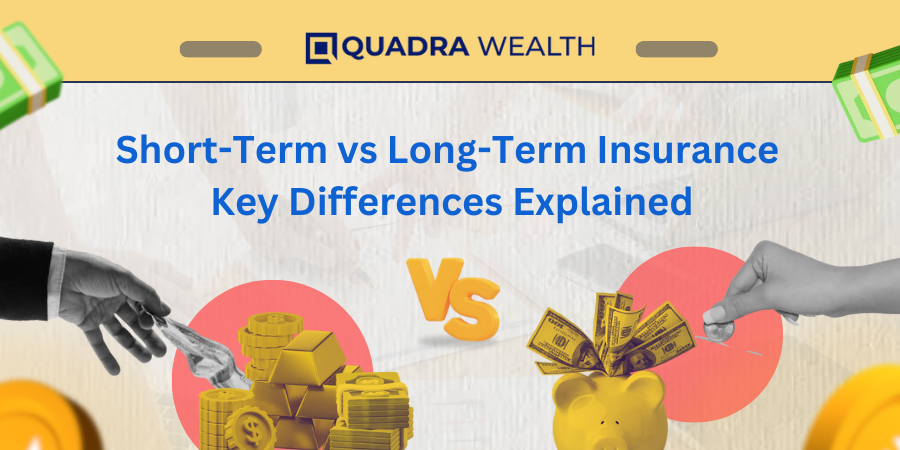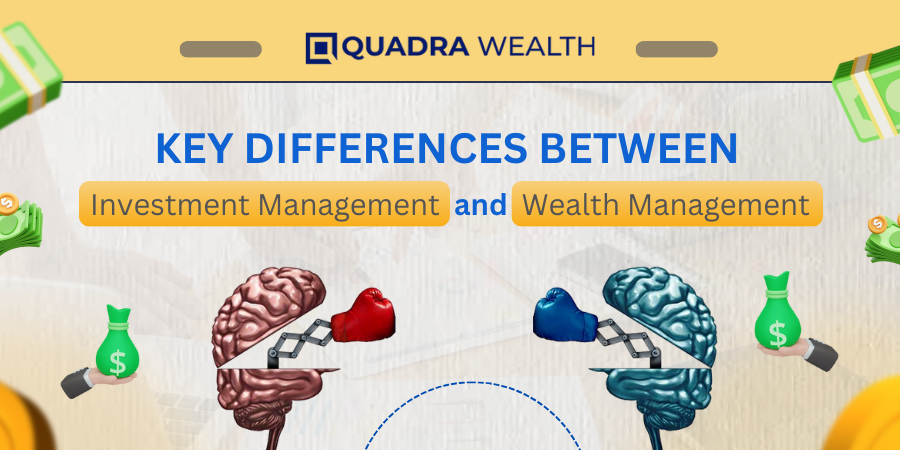Investing can often feel like navigating through a maze, especially when your goal is long-term growth and stability. The fact is, the right investment strategy can be a game-changer for safeguarding your financial future.
This article unravels the best strategies and top options for long-term investments, guiding you on how to achieve stable returns over time. Ready? Let’s dive into creating your wealth-building roadmap!
Key takeaways
● Long-term investment involves putting money into something for many years, allowing it to grow and make more money over time.
● The best long-term investment strategies include growth investing, value investing, dividend investing, dollar-cost averaging, and index investing.
● Long-term investment strategies are usually what comes to mind when thinking about investing. These include rental real estate, stocks, investing in mutual funds, and gold or collectibles.
● Diversification is important in long-term investments as it helps reduce risk and protects against market volatility.
Understanding the Concept of Long-Term Investment
A long-term investment is a plan where you put money into something for many years. Often, this is five years or more. You do not touch the money during this time. You let it grow and make more money for you.
There are many ways to do long-term investing. Some people buy stocks in companies that they think will grow over time. Others might put their money into bond funds or real estate properties.
All these options come with risks, but they can also bring big rewards if the market does well and your assets go up in value.
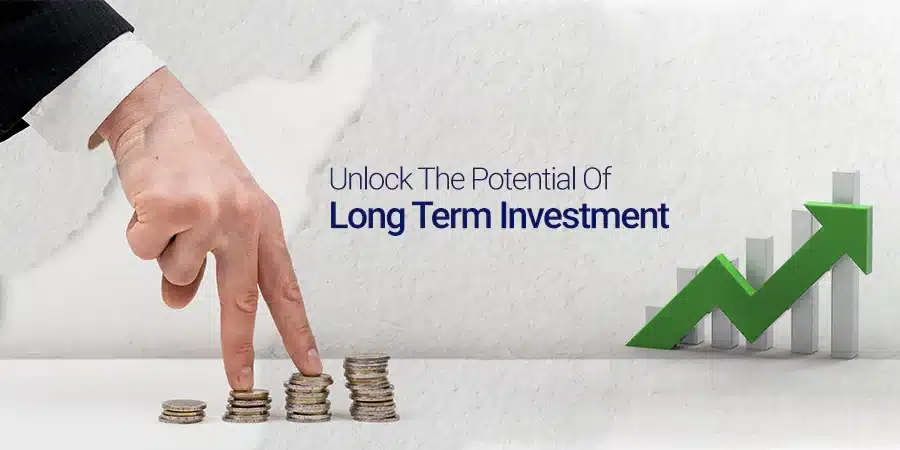
Best Long-Term Investment Strategies

Growth Investing
Growth investing is looking at stocks that will rise. Investors in growth investing buy shares from firms they know will do well in the future. These firms are often young and have a lot of room to grow.
Growth investors focus on companies with strong leaders and many chances for success. They take more risks but also hope for bigger rewards.
Dollar-cost averaging can help minimize market ups and downs while doing growth investing.
Value Investing
Value investing is a smart way to grow your money. You look for stocks that cost less than they should. This means you buy them at a low price.
You have to know about the company’s cash, debts, and plans for growth to decide if a stock is cheap or not.
People like Warren Buffett use value investing and make lots of money from it. But be ready to wait! It can take time for others in the market to see what you see and start buying the stock too, which will push up its price.
Income investing
Investment strategies can help investors achieve a particular aim; for instance, producing a steady income stream. Many investors use income investing to help cover their living expenses particularly when transitioning into retirement.
There are different investments that can produce income, from dividend-paying stocks to bonds and CD ladders to real estate.
Dividend Investing
Dividend investing is a smart move. It means buying shares in companies that give part of their profits back to shareholders. These are called dividends.
Companies that share dividends are often safer and more stable than growth companies. They can provide yearly payouts of around 3 or 4 percent.
Some even raise their payouts by 8 or 10 percent each year for a long time! Plus, these stocks usually don’t jump up and down in price as much as growth stocks do.
This makes them less risky for you, the investor.
Dollar-Cost Averaging
Dollar-cost averaging is a smart way to grow your money. You put the same sum in your investment at set times. This could be every week or month. The key idea is to buy more when prices are low and less when they soar.
One good example of this is keeping up with your 401(k) through regular paychecks. It allows you to buy into the market at many price points over time which can cut risk and free you from guessing the best moment for people looking to invest.
A solid plan and a funded brokerage account let you grab good deals fast!
Index Investing
Index investing is a smart way to grow your money. It means buying an index fund or ETF that mirrors a market index. Many people choose this strategy because it has lower fees.
You also have less investment risk as you’re spreading your money across many stocks, not just one. This type of investing rides on the idea that markets tend to go up over time.
So, while there might be ups and downs in the short term, in the long run, you’ll see growth. Index investing isn’t just for pros; it’s great for new investors too!
You have lots of choices when it comes to index funds or ETFs.
These can track different parts of the market, sectors, or types of assets. Choosing one depends on what fits best with your investment goals and financial situation.
But no matter which you pick, remember that index investing is all about playing the long game.
Top Long-Term Investment Options
The top long-term investment options include growth stocks, stock funds, bond funds, dividend stocks, value stocks, real estate, small-cap stocks, and robo-advisor portfolios.

Growth Stocks
It’s a great choice for long-term investing. They are shares in fast-growing companies that expect to rise above average in the market. These businesses often take first place in areas like tech or health care.
They plow back their income into bold growth plans instead of paying dividends to shareholders. Over time, you can make money when the stock’s price goes up.
It is best if you pick high-growth stocks wisely to lessen business risk and rank high on investment returns.
Stock Funds
Stock funds are a popular option for long-term investment. These funds invest in a portfolio of stocks, allowing investors to diversify their risk across different companies.
By holding onto these funds over the long term, investors may benefit from the potential growth and performance of the underlying stocks.
Additionally, stock funds provide an opportunity for dollar-cost averaging, where investors regularly contribute a fixed amount of money, buying more shares when prices are low and fewer shares when prices are high.
This strategy can help mitigate the impact of short-term market volatility on investments.
Bond Funds
Bond funds are investment vehicles that provide exposure to a diversified investment portfolio of bonds. These are actively managed funds by professional fund managers who carefully select and manage the bonds within the portfolio.
Bond funds can include different types of bonds, such as government, corporate bonds, and municipal bonds.
One key benefit of bond funds is that they offer regular income through interest payments received from the underlying bonds. This makes them suitable for investors who seek steady income and want to preserve their capital over the long term.
Additionally, bond funds can act as a hedge against stock market volatility since they generally have lower volatility compared to stocks.
Investing in bond funds is a way to diversify your investment portfolio and potentially reduce market risk. They offer stability and can be an alternative to more volatile investments like stocks.
Dividend Stocks
Dividend stocks are a type of investment that offers stability and regular cash payouts for long-term investors. These stocks are considered safer and more established compared to growth stocks.
With dividend stocks, you can expect annual payouts ranging from 3 or 4 percent, with some companies even increasing their dividend payments by 8 or 10 percent per year over long periods.
However, it’s important to note that dividend stocks can still experience fluctuations in value, especially during rough stock market periods.
Overall, dividend stocks provide a sense of stability and are suitable for long-term buy-and-hold investors looking for consistent income streams.
Value Stocks
Value stocks are a type of investment that can be great for long-term investors who want to hold onto their investment products. These stocks belong to companies that are considered undervalued by the market.
This means that their stock price is lower than what their true value should be. Value stocks tend to have lower price-earnings ratios, which makes them cheaper compared to other stocks.
They can also provide good returns while taking on less risk, making them attractive options for investors.
Additionally, when interest rates rise, value stocks become even more appealing because they are already priced lower than other stocks.
Real Estate
Real estate is considered one of the top long-term investment options for growth and stability. It allows individuals to be their own boss and take advantage of tax laws that benefit property owners.
While real estate investments come with risks, such as borrowing significant amounts of money and a lack of diversification and asset allocation, they can provide consistent cash flow through rental income.
Additionally, real estate has the potential for appreciation in value over time. So if you’re looking for a stable long-term investment strategy, real estate could be a viable option to consider.
Small-Cap Stocks
Small-cap stocks are a type of investment that involves buying shares in smaller companies with a market capitalization of between $300 million and $2 billion. These stocks have the potential to provide high returns if investors can find hidden gems within this segment of the market.
However, it’s important to note that small-cap stocks are generally more volatile and have more business risk compared to larger companies. This means they can experience bigger price swings and may be more susceptible to economic downturns.
Investors interested in small-cap stocks should carefully research individual companies, assess their financial health, and consider their long-term growth prospects before making any investment decisions.
Robo-Advisor Portfolio
A robo-advisor portfolio is a type of investment option that uses artificial intelligence to manage your money. It’s a popular choice for long-term investors because it offers convenience and low fees.
With a robo-advisor, you can create an investment plan online based on your financial goals and tolerance of risk. The AI algorithms then automatically select and rebalance a diversified portfolio of exchange-traded funds (ETFs) for you.
This means you don’t have to worry about picking individual stocks or timing the market yourself. Robo-advisors also offer features like tax-loss harvesting, which can help reduce your tax burden.
Importance of Diversification in Long-Term Investment
Diversification is highly important for long-term investments because it helps reduce risk and protects against market volatility.
By spreading your investments across different asset classes, sectors, and regions, you can potentially benefit from the performance of multiple investments and avoid the negative impact of poor performance from a single investment.
A well-diversified portfolio includes a mix of assets such as bonds, real estate, and commodities to achieve balance. Regularly reviewing and adjusting your diversification strategy is crucial to align with your investment goals and market conditions.
Diversification also helps prevent concentration in a single investment, reducing the risk of significant losses.
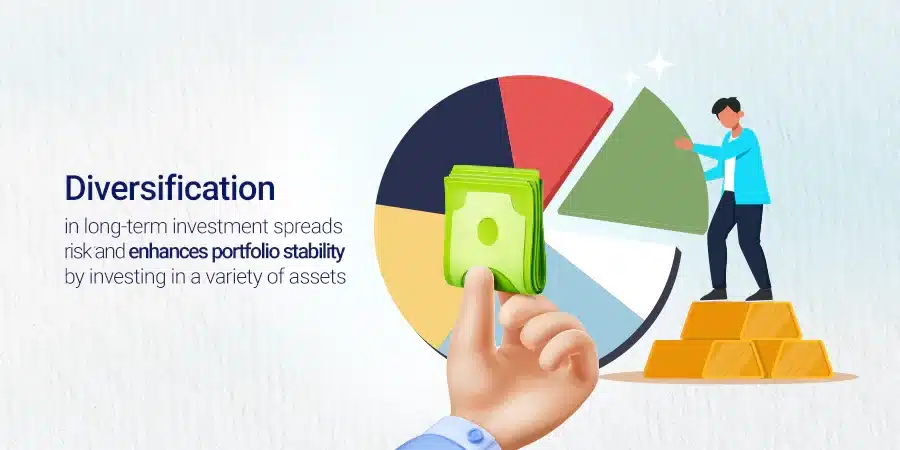
The Role of Risk and Reward in Long-Term Investing
Long-term investing involves taking on some level of risk in order to achieve potential rewards. When it comes to investing, the general rule is that higher potential returns usually come with a higher level of risk.
This means that if you want to aim for higher gains over the long term, you may need to be willing to accept more volatility and fluctuations in the value of your investments.
On the other hand, if you prefer a lower level of risk, you may have to settle for lower potential returns. It’s important to find a balance between the amount of risk you’re comfortable with and the potential rewards you hope to achieve.
This will depend on factors such as your financial goals, time horizon, and personal tolerance for market ups and downs.
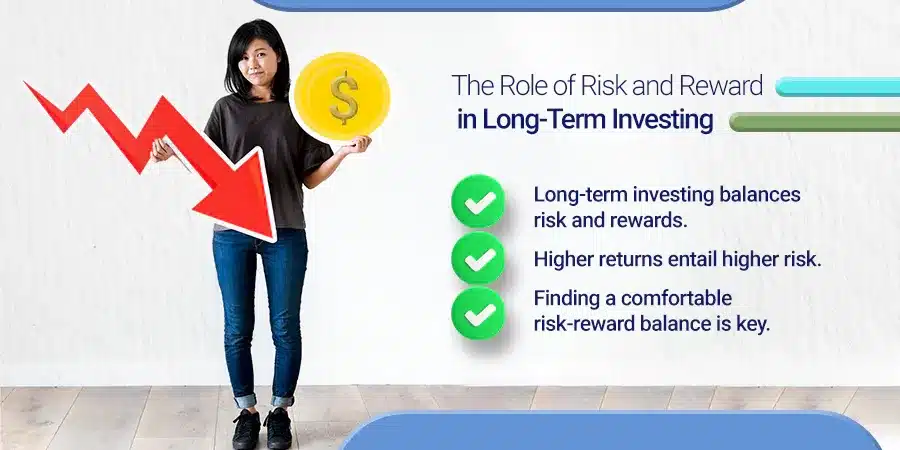
One strategy that can help manage risk in long-term investing is dollar-cost averaging (DCA). With DCA, instead of trying to time the market by buying when prices are low and selling when they’re high, people invest a fixed amount at regular intervals over time.
This approach helps smooth out price fluctuations because it automatically buys more shares when prices are low and fewer shares when prices are high. In summary, understanding and managing much risk is an essential aspect of long-term investing.
By finding a balance between risk and reward based on your individual circumstances and using strategies like dollar-cost averaging, you can increase your chances of achieving your long-term investment goals and financial security while minimizing unnecessary risks.
Key Principles for Successful Long-Term Investing
Understand your investments, be consistent with your strategy, know your investment timeline, and ensure diversification of your investments.
Understanding your investments
To make informed decisions about your investments, it’s important to understand them. Start by researching and learning about the different types of investments available, such as stocks, bonds, mutual funds, and real estate.
Consider your financial goals and tolerance of risk when selecting investments. Pay attention to factors like past performance, company financial statements, and market conditions.
Remember that investing involves risks and that past performance doesn’t guarantee future results. Seek guidance from a qualified professional before making any investment choices to ensure you’re on the right track toward achieving your long-term financial goals.
Consistency with your strategy
Consistency with your investment strategy is a key principle for successful long-term investing. It means sticking to your plan and not being swayed by short-term market fluctuations or emotions.
By staying consistent, you can avoid making impulsive decisions that may harm your investments. It’s important to remember that investing is a long-term game, and it’s better to stay the course rather than try to time the market.
Consistency allows you to ride out market ups and downs and gives your investments time to grow. So, stay focused, stick with your strategy, and trust in the power of long-term growth.
Knowing your investment timeline
Understanding your investment timeline is a critical element in long-term investing. It refers to the length of time you plan to keep your investments before needing to access the funds.
This timeline can vary depending on your financial goals and circumstances. By knowing your investment timeline, you can select appropriate investments that align with your objectives.
For example, if you have a longer timeline, you may be more comfortable with higher-risk investments that have the potential for greater returns over time.
On the other hand, if you need the money in the near future, it may be more suitable to choose lower-risk options to preserve capital.
Ensuring diversification of your investments
Diversifying your investments is a smart way to protect yourself from potential risks in the long run. By spreading your investment dollars across different types of assets, industries, and locations, you reduce the impact of any single investment performing poorly.
This means that if one part of your portfolio isn’t doing well, other areas may be thriving and help offset any losses. Diversification also allows you to take advantage of various opportunities for growth in different sectors or regions.
So instead of putting all your eggs in one basket, it’s important to have a balanced mix of stocks, bonds, real estate, and other assets to help ensure long-term growth and stability.
Strategies for New Investors
Start your investment journey with a retirement account, embrace buy-and-hold investing, explore socially responsible options, and consider active investing – find out more to kickstart your success.
Start with a Retirement Account
To kickstart your long-term investment journey, it’s recommended to start with a retirement account. This serves as a solid foundation for new investors and provides various benefits.
Dollar-cost averaging is a popular strategy that can be used within retirement accounts to reduce the impact of market volatility. By regularly investing a fixed amount, you’ll buy more shares when prices are low and fewer when they’re high, ultimately lowering the average cost per share over time.
Additionally, managing your retirement account yourself or seeking professional help are both viable options depending on your preference and level of expertise.
Buy-and-Hold Investing
Buy-and-hold investing is a straightforward strategy that involves buying quality companies and holding onto them for the long term. It’s considered a dependable way to create wealth over time.
Instead of constantly trading stocks, this strategy requires patience and the belief that strong-performing stocks will continue to perform well in the future. By avoiding frequent trading, you can reduce transaction costs and potentially increase your investment returns.
Additionally, dollar-cost averaging can be used with buy-and-hold investing to minimize exposure to volatility by consistently investing a fixed amount at regular intervals regardless of market conditions.
Active Investing
Active investing involves actively making decisions and managing your investments to try to outperform the market. As a new investor, there are several active investing strategies you can consider.
Value investing focuses on finding undervalued stocks that have strong potential for growth. Growth investing, on the other hand, looks for companies with high earnings growth rates.
Dividend investing involves selecting stocks that pay regular dividends, providing a steady income stream. Lastly, momentum investing relies on identifying stocks that are currently trending upward in terms of price movement.
It’s important to thoroughly research and analyze these strategies before making any investment decisions. Risk management is also crucial in active investing, so setting realistic investment goals based on your risk tolerance is essential.
Socially Responsible Investing
Socially responsible investing is an investment strategy that aims to make a positive impact on society while also generating returns. It involves selecting investments for a portfolio that align with one’s financial goals and risk tolerance, taking into consideration factors such as environmental sustainability, social justice, and good governance practices.
Socially responsible investing can be combined with other investment strategies to create well-rounded portfolio management. By considering these ethical factors, investors can reduce risk and counteract cognitive biases that may affect their decision-making process.
This approach recognizes the importance of companies’ impact on society and seeks to support underlying business that contributes positively to the world.
The Impact of Taxes and Costs on Long-Term Investments
Taxes and costs can have a significant impact on long-term investments. It is important to consider taxes when creating a financial plan to optimize your goals and minimize your tax burden.
By keeping investment costs low, such as investing in low-cost index funds or ETFs that track broad market indexes, you can maximize your returns.
Diversification across sectors, factors, and geographies is crucial for maintaining a diverse portfolio and mitigating volatility.
Additionally, employing the strategy of dollar-cost averaging can be beneficial for long-term investing as it helps avoid buying at high prices. Regular investing strategies allow you to continue adding to your investments even when prices are down, increasing the likelihood of getting a good deal.
In general, long-term investments have the potential to earn more than short-term investments.
Conclusion
In conclusion, when it comes to the best investment strategies for long-term growth and stability, there are several options to consider. Whether it’s growth investing, value investing, dividend investing, or dollar-cost averaging, each strategy has its own benefits and risks.
It’s important to diversify your investments and understand your investing goals and risk tolerance. By doing thorough research and seeking advice from qualified professionals, you can make informed decisions that align with your financial future.
So start early, stay invested, and remember: long-term investing strategies are about patience and consistency for achieving your long-term goals.
FAQs
The best investment strategy for long-term growth and stability is to diversify your investments across different asset classes, such as stocks, bonds, and real estate.
There is no specific amount of money needed to start investing in this strategy. You can begin investing with any amount that you are comfortable with, even small amounts on a regular basis.
It is recommended to consult a financial advisor before implementing any best investing strategies. They can provide personalized financial planning and advice based on your financial goals and risk tolerance.
No investment strategy can guarantee profits as the market fluctuates. However, a diversified portfolio has historically shown higher potential for long-term growth and stability compared to putting all your eggs in one basket.






